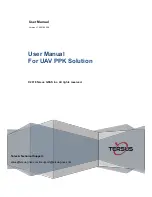
DEUTSCH
ENGLISH
ENGLISH
ADJUSTMENT POSSIBILITIES FOR THE HARNESS
SEAT DEPTH ADJUSTMENT
(adjustment only available on certain models).
To adjust seat depth, remove the Bump’air from your harness, if it has one.
The adjustment buckle located underneath the seat plate
makes enables seat depth and lumbar adjustment to suit
each pilot’s morphology. Once adjusted, double back the
webbing through the buckle a second time.
SHOULDER STRAP ADJUSTMENT (A)
For take-off comfort and getting into a sitting position, the
shoulder straps must be fairly slack, so that the pilot can be
in a standing position without feeling any pressure points.
ADJUSTMENT OF THE FLYING POSI-
TION – LUMBAR STRAPS (B)
The lumbar straps located on each side of the
pilot's chest are equipped with camlock buckles
which make it possible to alter one's position
during flight.
■
When the strap is short, you are flying in an
upright, seated position.
■
If you let this strap out to its maximum leng-
th, you will be flying in a supine, leaning-back
position.
■
To adjust these straps in flight, we
recommend that you ease the tension first
by leaning forward.
PLEASE NOTE :
Chosing a position leaning too far
back reduces stability and increases the risk of twisting of the
risers.
ADJUSTMENT OF THE CHEST STRAP
The more the chest strap is tightened, the greater the efficiency of the "Auto
Balance System" (stabilizing system) and roll response of the wing is reduced.
The pilot may feel more stable in his harness in turbulent conditions, the wing
may be more stabilized in the event of an asymmetric collapse, but the wing
may bank less when turning.
SUP'AIR’s integrated Auto Balance System (stabilization system) makes
SUP’AIR harnesses well suited to paragliders that respond well to weight-shift.
PLEASE NOTE :
this adjustment can be quite sensitive and it is best
to try adjusting it under a static swing, and then in still air, before
trying to change it during a turbulent flight. Before taking off, don't
forget to pre-adjust your chest strap.
THE SAFE-T-BAR (C)
The majority of the SUP’AIR harness
models are equipped with this sys-
tem. This system is simple and does
not make putting the harness on
more complicated: the chest strap
can quickly be buckled with a single
buckle whose central part has two
tips. Closure of the chest strap
buckle can only be done with the
SAFE-T-BAR buckle, which is on
another strap, linked to the left leg
strap. If the leg strap buckles have
been opened, after an abandoned
take-off, for example, and have not
been closed again, the SAFE-T-BAR
system prevents you falling from the
harness should you take off without
doing up the leg straps.
WARNING:
even the SAFE-
T-BAR system does not
give a total guarantee
against getting the harness on wron-
gly. The SAFE-T-BAR strap must pass
between your legs.
SIV (SIMULATION OF FLYING PROBLEMS)
AND FLYING OVER WATER
The BUMP’AIR protection MUST be removed from the harness in the case of a
SIV session over water, and when flying over large bodies of water in general. If
you land in water using a BUMP’AIR, there is a real danger that its buoyancy
under the base plate and behind the pilot's back lead to the pilot's head being
held under water. During SIV or flying over water, we recommend the use of a
life-jacket equipped with a collar which will keep the pilot's head above water
in the case of loss of consciousness.
WHAT SHOULD BE CHECKED AFTER HEAVY
LANDING?
The BUMP’AIR functionalities should, in theory, stay intact even after a heavy
landing. This has been verified in tests. The BUMP’AIR is not a "throw-away"
product. Make sure, nevertheless, that the seams and the material have not
been damaged.
TRANSPORTING, STORING AND CARE OF THE
BUMP’AIR PERMANENT AIRBAG
You can remove the BUMP’AIR from the harness during transportation and roll
it up to reduce its volume by about 30%. You can then secure the roll using a
Velcro
®
strip.
Before take-off, the BUMP’AIR must be unrolled for a few minutes to inflate to
its usual size and total efficiency.
For longer-term storage, the BUMP’AIR must be left uncompressed in a dry
place.
TA N D E M F L I G H T S U S I N G B U M P ’ A I R
PROTECTIONS
For tandem flying, and especially when both pilot and passenger are equipped
with a BUMP’AIR made by SUP’AIR, it is necessary to use spreaders to ensure
that there is some distance between them.
The pilot and the passenger must be able to fly in a comfortable position and
not get in each other's way. This must be checked before flight, hanging from
the spreaders that will be used for the flight.
FIXING THE BUMP’AIR 17
WITH VELCRO® STRIPS.
CLOSING THE BUMP’AIR
POCKET
INSERTING
THE BUMP’AIR
IN THE HARNESS
At hip level there are two Velcro
®
strips which stop the BUMP’AIR 17
slipping.
These strips must be
adjusted so as to leave a little
space between the protection
and the pilot's back
. If your har-
ness is not equipped with Velcro
®
strips for fixing the protection, it is
necessary to make sure that the pro-
tection cannot move, otherwise there
could be the risk that the pilot could
slip beyond the protection in the case
of a landing in a sitting position.
B
C
19
18
A
---Notice SUPAIR 2702_GB_DE 10/03/03 15:21 Page 18
























